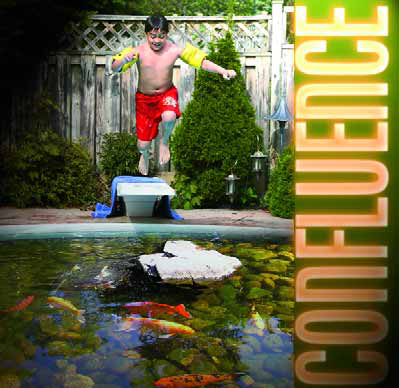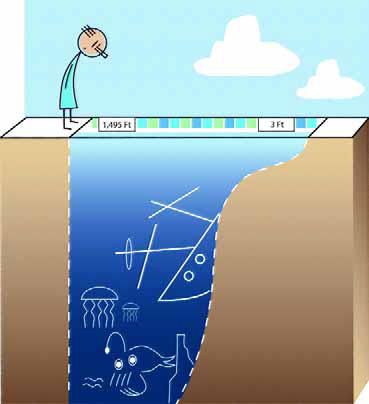waterfall design
I've always believed that if you're going to do something, you should do it so well that the results are beyond compare. That basic philosophy has guided our company, GCS of Woodbridge, Calif., from the very start. It has led us to apply the highest standards to every one of our projects, all of which have been executed on large estates for ambitious, affluent, selective clients who invariably want something no one else has. We've been selective from the start as well, seeking clients who are in the process of creating the homes of their dreams and who want to have fun with (and in) their exterior spaces. In most cases, what they want are true oases - resort-like settings that give them a taste of
I've always believed that if you're going to do something, you should do it so well that the results are beyond compare. That basic philosophy has guided our company, GCS of Woodbridge, Calif., from the very start. It has led us to apply the highest standards to every one of our projects, all of which have been executed on large estates for ambitious, affluent, selective clients who invariably want something no one else has. We've been selective from the start as well, seeking clients who are in the process of creating the homes of their dreams and who want to have fun with (and in) their exterior spaces. In most cases, what they want are true oases - resort-like settings that give them a taste of
All projects come to an end, of course, but there are times when the inevitable takes its own, sweet time. The project featured here, for example, took more than six years from the time I first met the clients until we wrapped things up. Unlike some projects that take a long time because of ongoing problems, change orders and difficult challenges, this one was very much a labor of love from start to finish. Sure, there were some tough spots, but for the most part, this was one of those jobs that we watershapers and landscape professionals can only hope will come along from time to time - projects we don't mind extending through a period of years. This one had everything going for it, starting with great clients who had the resources to do something special as well as playful, fun-loving personalities that made the process exciting and rewarding. Then there was the property: an acre of ocean-view hillside in Brentwood, Calif., with mature trees and a big, Cape Cod-style house that was going through extensive remodeling during the time we were involved with the landscape. The clients wanted something that was elegant but playful, with formal lines and structures but a light overall touch. They insisted on beautiful materials, were heavily involved in every decision and, ultimately, had our firm, New Leaf Landscape of Agoura Hills, Calif., work with
Every year, it seems, I'm asked to teach more and more classes on how to build streams, waterfalls and ponds that look natural. I enjoy conducting these sessions for local supply houses, landscape architecture firms, community colleges and other organizations and find it flattering that they value what I know. My motivation for sharing, however, is less about ego gratification than it is about my awareness that there's no way a single company can build all of the naturalistic watershapes consumers want these days. To me, it's a matter of collective as well as personal interest that these watershapes be built to function well and look great. In Colorado in particular, I also see a need for work that appears completely and distinctly natural, simply because most clients here are accustomed to seeing remarkable beauty in the countless alpine settings that grace this beautiful state. Indeed, it's a fact of professional life here that the work must mimic nature closely or it just won't fly. That can be very good for business, of course, but only if more than a few professionals hereabouts are up to the challenge. Available projects range from those that use thousands of
It certainly doesn't happen very often, but sometimes the addition of a watershape can completely redefine the way a property is perceived. In the case seen here, a nine-acre estate in the mountains above of Malibu, Calif., was zoned for agriculture. The owner's intention in buying it was quite appropriate: He wanted to turn it into a working vineyard brought to life visually by a big stream, pond and waterfall system. Once the watershape took form, however, the owner was so inspired by what he saw that his vision for the property changed and he recast the place as a venue for weddings and other events that would be enhanced by the bucolic, utterly romantic surroundings. In a very direct way, in other words, the watershapes served to increase both the aesthetic and financial value of the property. I'm a romantic at heart, so the notion that the work on display here will be a backdrop for special, memorable occasions has made the big, complicated project even more
I've been using the word "confluence" a lot lately - so often, in fact, that I decided to look it up to be sure that I wasn't misusing it in some way. According to Webster, the first definition of confluence is "a flowing together of two or more streams," with a second meaning of "a gathering, flowing, or meeting together at one juncture or point." To me, it's a perfect word to describe a trend that's redefining the watershaping industries - that is, a growing confluence between the pool/spa and pond/stream industries. Coming from the pool/spa side of the discussion, I can recall a time not very long ago when ponds and streams were only rarely if ever considered by anyone in my business. What could pools and spas possibly have in common with
I believe it's fair to say that many of us who are now in the business of creating naturalistic watershapes have been intensely influenced and inspired by experiences we had as children playing near streams, waterfalls and ponds. That was certainly true for me as a kid growing up on Long Island, N.Y., where I was constantly exposed to beautiful natural bodies of water. When I grew up, I found myself in the entertainment industry for several years. It was exciting at times, but no matter where I went, I always felt myself being drawn back to
The art of watershaping so often is all about the art of finishing. Certainly, every stage of any project is important, but the final steps leading to completion are what make most designs come to life. The project pictured here, which I've covered in five of my "Details" columns during the past couple years, has been an undertaking of extraordinary scale and mammoth complexity. As I mentioned frequently in those columns (November 2003, January and February 2004 and January and February 2005), the lion's share of the project management fell to my east coast partner and dear friend Kevin Fleming, who truly has endured a baptism of Tisherman-style fire as he
The art of watershaping so often is all about the art of finishing. Certainly, every stage of any project is important, but the final steps leading to completion are what make most designs come to life. The project pictured here, which I've covered in five of my "Details" columns during the past couple years, has been an undertaking of extraordinary scale and mammoth complexity. As I mentioned frequently in those columns (November 2003, January and February 2004 and January and February 2005), the lion's share of the project management fell to my east coast partner and dear friend Kevin Fleming, who truly has endured a baptism of Tisherman-style fire as he
It's a fact: A great many of the ponds and lakes in the western United States are simply not part of nature's scheme. Whether used for water retention, landscape beautification, fishing or swimming, these artificial, man-made bodies of water are inclined (and in some cases doomed) to be troubled, usually because of fertilizer- and pesticide-laced runoff from surrounding developed areas. Indeed, some of these problem watershapes are filled with just about the worst water the environment has to offer. As our business has developed, a large portion of what we do has focused on setting things right in these troubled watershapes and




















